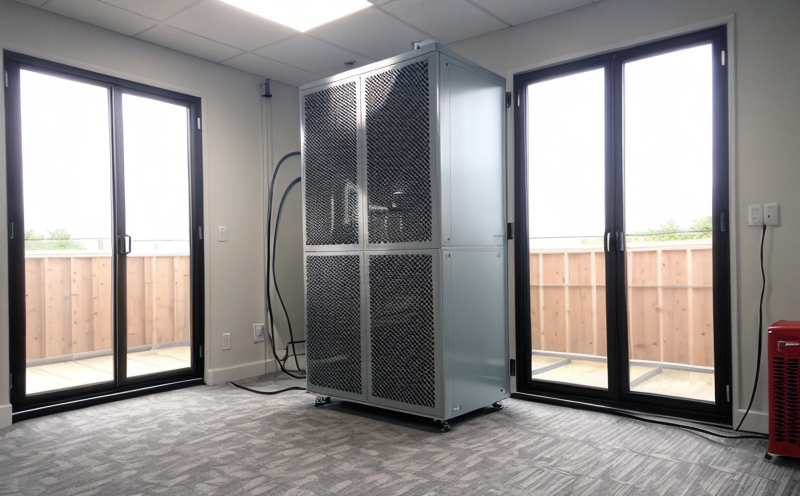ISO 29463 HEPA Filter Airflow Testing
The ISO 29463 standard is a critical guideline for testing the air flow characteristics of high-efficiency particulate air (HEPA) filters. This test ensures that these filters meet the required performance levels as specified in the standard, which is paramount in maintaining indoor air quality and ensuring compliance with health and safety regulations.
HEPA filters are commonly used in various sectors including healthcare facilities, cleanrooms, laboratories, and residential buildings. The testing process involves placing a HEPA filter into a specially designed test chamber where airflow is measured under defined pressure differentials. This ensures that the filter can effectively capture submicron particles without compromising air flow rate.
The methodology for this ISO standard includes detailed procedures to prepare the specimen, such as ensuring it is free from dust and contaminants before testing. The apparatus used in this process typically consists of a test chamber with sensors capable of measuring both pressure differentials and airflow rates accurately. Compliance officers and quality managers rely on these tests to verify that filters meet or exceed specified performance thresholds.
The acceptance criteria for ISO 29463 are stringent, emphasizing the importance of accurate measurement techniques and repeatable results. The test aims at ensuring a minimum efficiency of 99.97% for particles with diameters ranging from 0.3 to 1 micron when tested under specific pressure differentials.
For R&D engineers and procurement professionals, this testing is essential in selecting the right HEPA filters for their applications. By adhering to ISO 29463 standards, they can ensure that the chosen filters meet necessary performance criteria, thereby enhancing overall system efficiency and reliability.
| Application | Description |
|---|---|
| Hospital Operating Rooms | To maintain sterile conditions and protect patients from airborne contaminants. |
| Pharmaceutical Manufacturing Facilities | To ensure product quality by preventing contamination of medications with particulates. |
| Cleanrooms in Semiconductor Fabrication | To avoid particle contamination that can lead to defects in microchips. |
Scope and Methodology
The scope of ISO 29463 is broad, encompassing the testing of HEPA filters for their air flow characteristics under various pressure differentials. This ensures that the filter maintains its efficiency over a range of operating conditions which are crucial in real-world applications.
- Testing involves measuring airflow rates at multiple points across the filter.
- Determining the pressure drop across the filter to assess energy consumption and performance.
- Evaluating the filtration efficiency by comparing actual particle counts before and after passing through the filter.
The methodology also includes detailed calibration procedures for all instruments used, ensuring accuracy and reliability of measurements. Compliance officers must ensure that these tests are conducted in controlled environments to avoid external variables affecting results.
Industry Applications
- Hospital Operating Rooms
- Pharmaceutical Manufacturing Facilities
- Cleanrooms in Semiconductor Fabrication
- Bio-research Laboratories
Environmental and Sustainability Contributions
The testing of HEPA filters as per ISO 29463 not only ensures high performance but also contributes significantly to environmental sustainability. By maintaining efficient air filtration systems, facilities can reduce the need for additional ventilation and heating, thus conserving energy.
HEPA filters play a crucial role in reducing particulate emissions into the environment. This is particularly important in sectors where indoor air quality directly impacts public health. Cleanrooms, for instance, contribute to maintaining safer working environments which can lead to fewer sick days among employees and less waste due to product defects.
In summary, adherence to ISO 29463 standards helps organizations not only meet regulatory requirements but also enhance their environmental footprint positively by promoting energy efficiency and reducing pollutants.





